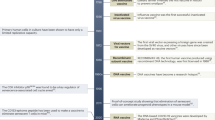Abstract
ANIMALS deficient in lymphoreticular function either by age, genotype or immunosuppression are more susceptible to infection by most known pathogens mainly on account of their depressed immunological responses. An intact lymphoreticular system (LRS), however, can itself contribute to disease by various mechanisms including; providing sites for multiplication1, producing infectious complexes2 and precipitating autoaggressive accompaniments and sequalae3. It is possible that a special class of this paradoxical relationship is exemplified by the slow encephalopathies of which the best understood is scrapie, others being kuru, Creutzfeldt-Jakob disease and mink encaphalopathy. In these diseases of the central nervous system, infection normally occurs by some peripheral route and there always seems to be an initial, probably obligatory, replicative phase in the LRS before gaining access to the target organ4,5. In spite of this involvement of the LRS, and indicating some very special relationship as its basis, there is a complete absence of conventional immunological responses. No scrapie-specific antibodies6 or interferons7 have been found, and this is not due to any generalised depression of immune reactions8. Immunosuppressive techniques, which severely impair the functions of the B and T-cell elements of the LRS, do not affect the pathogenesis of peripherally injected scrapie9,10. Also congruent with an absence of immune responses is the non-inflammatory nature of the brain lesions even in the later stages of the disease11,12.
This is a preview of subscription content, access via your institution
Access options
Subscribe to this journal
Receive 51 print issues and online access
$199.00 per year
only $3.90 per issue
Buy this article
- Purchase on Springer Link
- Instant access to full article PDF
Prices may be subject to local taxes which are calculated during checkout
Similar content being viewed by others
References
Wheelock, E. F., and Toy, S. T., Adv. Immun., 16, 123–184 (1973).
Notkins, A. L., J. exp. Med., 134, 41s–51s (1971).
Choppin, P. W., in Textbook of Immunopathology, (edit. by Miescher, P. A., and Muller-Eberhard, H. J.), 1, 337–349 (Grune and Statton, New York, 1968).
Eklund, C. M., Kennedy, R. C., and Hadlow, W. J., J. infect. Dis., 117, 15–22 (1967).
Kimberlin, R. H., Scrapie in the mouse: a model slow disease, (Merrow Monograph, 1974).
Porter, D. D., Porter, H. G., and Cox, N. A., J. Immun., 111, 1407–1410 (1973).
Worthington, M., Infect. Immun., 6, 643–645 (1972).
Gardiner, A. C., and Marucci, A. A., J. comp. Path., 79, 233–235 (1969).
McFarlin, D. E., Raff, M. C., Simpson, E., and Nehlsen, S. H., Nature, 233, 336 (1971).
Worthington, M., and Clark, R., J. gen. Virol., 13, 349–351 (1971).
Zlotnik, I., Acta Neuropath., supplement 1, 61–70 (1962).
Fraser, H., thesis, Univ. of Edinburgh, (1971).
Dickinson, A. G., and Fraser, H., J. comp. Path., 79, 363–366 (1969).
Fraser, H., and Dickinson, A. G., Nature, 226, 462–463 (1970).
Dickinson, A. G., and Fraser, H., Heredity, 29, 91–93 (1972).
Outram, G. W., Dickinson, A. G., and Fraser, H., Nature, 241, 536–537 (1973).
Field, E. J., and Shenton, B. K., Nature, 240, 104–106 (1972).
Licursi, P. C., Merz, P. A., Merz, G. S., and Carp, R. I., Infect. Immun., 6, 370–376 (1972).
Dickinson, A. G., Taylor, D. M., and Fraser, H., Nature, 248, 510 (1974).
Nettesheim, P., and Hammons, A. S., Proc. Soc. exp. Biol. Med., 133, 696–701 (1970).
Pierpaoli, W., and Sorkin, E., Experientia, 28, 1385–1389 (1972).
Marsh, R. F., Miller, J. M., and Hanson, R. P., Infect. Immun., 7, 352–355 (1973).
Dickinson, A. G., Genetics, (in the press).
Poherecky, L. A., and Wurtman, R. J., Pharm. Rev., 23, 1–35 (1971).
Gibbs, C. J., and Gajdusek, D. C., Science, 182, 67–68 (1973).
Author information
Authors and Affiliations
Rights and permissions
About this article
Cite this article
OUTRAM, G., DICKINSON, A. & FRASER, H. Reduced susceptibility to scrapie in mice after steroid administration. Nature 249, 855–856 (1974). https://doi.org/10.1038/249855a0
Received:
Issue Date:
DOI: https://doi.org/10.1038/249855a0
This article is cited by
-
Intraperitoneal infection with scrapie is established within minutes of injection and is non-specifically enhanced by a variety of different drugs
Archives of Virology (1990)
-
Pathogenesis of hamster scrapie
Archives of Virology (1990)
-
Mitogenic stimulation of the host enhances susceptibility to scrapie
Nature (1978)
Comments
By submitting a comment you agree to abide by our Terms and Community Guidelines. If you find something abusive or that does not comply with our terms or guidelines please flag it as inappropriate.



